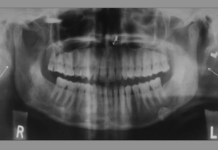Scientists have discovered a new nanoparticle solution that can prevent the formation of plaque and dental caries before it can damage the teeth. The initial proof of concept was presented online by an esteemed professor from the University of Illinois at Chicago during the American Chemical Society (ACS) Fall 2020 Virtual Meeting & Expo. The meeting featured more than 6,000 presentations on various scientific topics.
Nanotechnology and Dentistry: A Winning Combination
The advent of nanotechnology has revolutionized multiple industries since it was discovered by American physicist Richard Feynman in the 1950s. With nanotechnology, scientists are capable of manipulating matter on an individual atomic and molecular scale at the nanoscale level of 1 to 100 nanometers. For size comparison, the size of one nanometer is equal to one billionth of a meter. Now scientists can create different nanostructures by rearranging an object’s atoms to form nanomaterials with entirely new properties.
When nanotechnology is used to diagnose and treat dental patients, it is called nanodentistry. Nanoparticles and materials are already incorporated in the process of teeth whitening, restoring teeth, creating realistic dental implants, and other treatment methods. Nanomaterials are also frequently used in common household oral hygiene products such as mouthwash and toothpaste.
The most common elements that are modified on a nanoscopic level are silver, gold, calcium, and zinc oxide. Each one has different beneficial properties that can improve a patient’s oral health. For example, silver nanoparticles are generally used because it has a strong antimicrobial effect on oral bacteria.
About the University of Illinois at Chicago Dental Study
Scientists have developed a cerium oxide nanoparticle that can prevent caries from developing due to Streptococcus mutans. Russell Pesavento, DDS, Ph.D., an assistant professor at the University of Illinois at Chicago in the College of Dentistry, was the lead investigator of this innovative study. The research was funded with a grant by the National Institute of Dental and Craniofacial Research.
Streptococcus mutans is an oral bacterium that is known to cause dental caries when left untreated. After the bacteria gradually adds layers of biofilm to the outermost parts of the tooth, it starts to secrete acid as a by-product of sugar metabolism. The acid can demineralize tooth enamel over time and make it susceptible to dental caries.
Pesavento and his team of researchers were determined to create an intraoral agent that could identify bacterial strains of Streptococcus mutans and prevent the formation of dental caries. First, they dissolved ceric ammonium nitrate in water to develop cerium oxide nanoparticles. Next, they placed strains of Streptococcus mutans in polystyrene well plates and added sugar before injecting the cerium oxide nanoparticle solution. Pesavento noticed that while the nanoparticle solution didn’t kill off the strain of Streptococcus mutans completely, it did reduce the bacteria’s biofilm adherence by 40% compared to other polystyrene well plates that were not exposed to it. At the end of the study, Pesavento and his team were able to confirm that their engineered cerium oxide nanoparticle solution could prevent plaque by stopping the formation of adherent biofilm on the surface of the teeth.
In Conclusion
Pesavento hopes that his cerium nanoparticle formulation or similar treatment method will make it easier for patients to achieve a healthy smile in the near future. He is currently working with his team on developing a more stabilized version of the solution. He believes their discovery will have a lasting impact on eradicating dental caries by preventing plaque and dental caries from forming in the first place.











